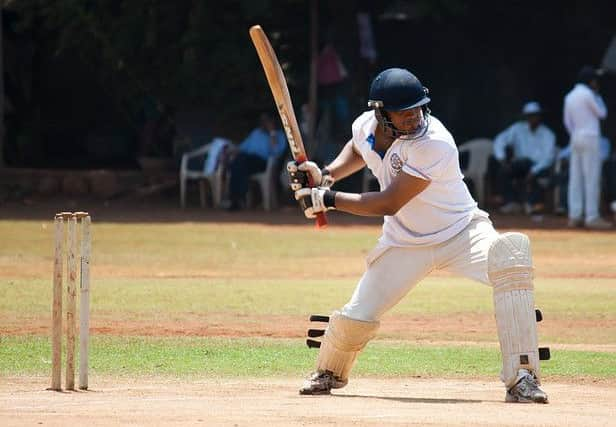How likely are you to get injured playing sport?


FOOTBALL
Football requires a player to be fast on their feet, agile and reasonably fit. There may be a lot of play-acting, but football injuries are frequent and very real. Knee injuries are the most common and can cut short a player’s long-term involvement in the game (anterior cruciate ligament injuries, in particular, can have serious repurcussions). Due to the surface played on and the constant changes of direction, ankle sprains are also a constant threat. Had injuries such as concussion through heading the ball or a clash of heads are a looming threat. Although some players with concussion may not actually pass out, side effects such as dizziness, headaches and nausea can occur.
Risk of injury: 5/10


TENNIS
As tennis requires constant movement of the legs and arms, there’s a lot of scope for injury. Sprained ankles are common to most professionals – Andy Murray has battled chronic ankle problems since turning professional in 2005. The constant sideways motions required in the game can sometimes cause the ankle to twist, especially if the ground is damp. Repeated stresses during tennis strokes can commonly be the cause of shoulder pain while the actual gripping of the racket can cause muscles to inflame – that’s tennis elbow. Tennis elbow causes pain when the outside of the elbow is touched or during certain hand movements.
Risk of injury: 4/10
RUGBY


Advertisement
Hide AdAdvertisement
Hide AdRugby is a rough old game, so you won’t escape most matches without a few knocks here and there. Despite wearing protective headgear, a significant number of those who play the game have sustained some kind of head injury. Figures reported in BBC’s Panorama stated that concussion injuries in rugby have doubled over the past five years with head trauma now constituting for 12.5 per cent of all match injuries. Symptoms linked to concussion are head and back pain as well as memory loss and mood swings. Less serious but equally prominent among players is cauliflower ear, which occurs when an ear sustains repeated blows.
Risk of injury: 6/10
SWIMMING
Despite its gentle reputation, swimming is not without its dangers. Due to the repetitive nature of its strokes, swimmer’s shoulder is the most common injury among professional and amauter swimmers. It can be caused by overuse of the shoulder or bad technique, and can result in serious pain while swimming and resting. Knee pain caused by the force of kicking in the likes of the breast stroke is also regularly experienced by swimmers. The knee can become inflamed and swollen, making exercising more painful. Otherwise, swimming is one of the safest sports you can take part in: it’s good for rehabilitation, losing weight and building stamina, no matter how old you are.
Risk of injury: 2/10
GYMNASTICS
As one of the most demanding sports physically and mentally, injuries experienced by those involved in gymnastics can be extensive. Minor injuries such as ankle or wrist sprains and pulled muscles are extremely common, but the threat of head, neck and back injuries is much more serious. Spondylolysis, an overuse injury where repeated stress to a small bone in the facet joint causes a fracture, is a chronic problem in sports such as gymnastics and dancing and results in extreme back pain.
Risk of injury: 6/10
CRICKET
Since the sudden death of Australian batsman Phillip Hughes, after he was hit behind the ear by a cricket ball, safety in cricket has come under scrutiny. While such incidents are extremely rare, injuries caused by cricket are not hard to come by. Much like tennis, the repetitive motions of bowling or fielding a ball can cause muscle strains and tears. Bowlers can suffer from back pain caused by bending to field the ball and standing for long periods of time. Side strain, referring to a tear in the internal oblique, external oblique or the transversalis fascia where they attach to the four bottom ribs, can also happen.
Risk of injury: 4/10
SKIING
The fast movement and unpredictability of skiing makes it one of the most dangerous sports out there. Head injuries can often occur due to falls or collisions at high speed, and bad accidents can be life threatening. Knee injuries, which account for one-third of all skiing injuries, occur due to the twisting forces generated by falls.
Risk of injury: 7/10